Lava dome continues to grow at Soufriere volcano, St. Vincent and The Grenadines
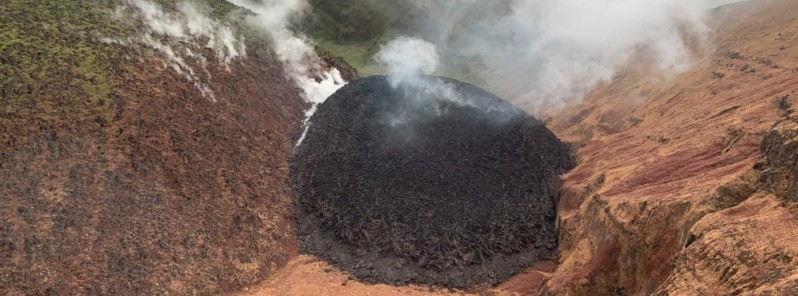
The lava dome at Soufriere volcano continues to grow laterally towards the east and west. The volcano continues to exude magma on the surface and steam can still be observed from the Belmont Observatory. The alert level remains at Orange.
The University of the West Indies Seismic Research Centre (UWI-SRC) Scientists Professor Richard Robertson, Dr. Thomas Christopher and Dr. Adam Stinton conducted an aerial reconnaissance of the La Soufriere volcano on January 14.
They got a first-hand view of the volcano and were able to take thermal images of heat distribution, gas emission, and dimension measurement of the new dome, the country's National Emergency Management Organisation (NEMO) said.
Aerial surveillance was not perfect, however, they were able to identify landing areas.
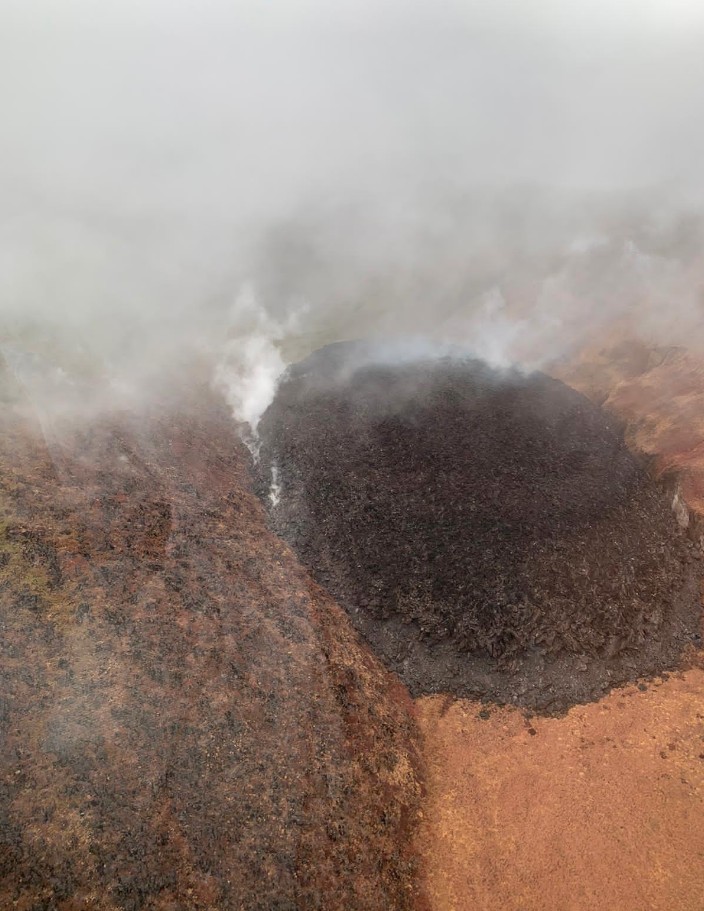
The lava dome at Soufriere volcano on January 14, 2021. Credit: UWI-SRC
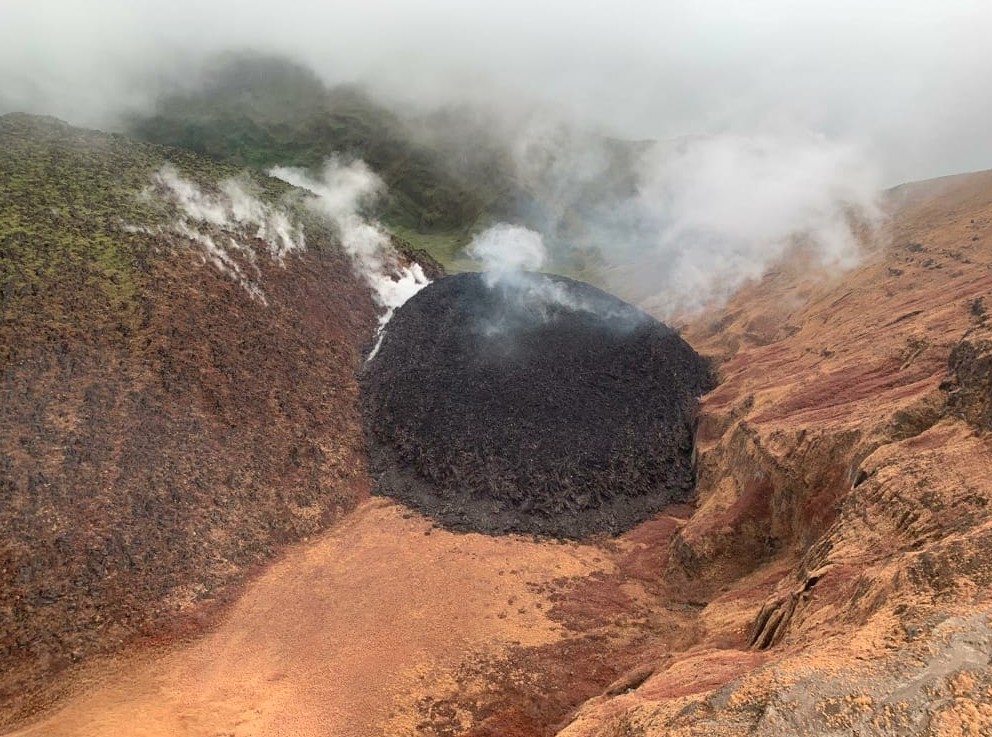
The lava dome at Soufriere volcano on January 14, 2021. Credit: UWI-SRC
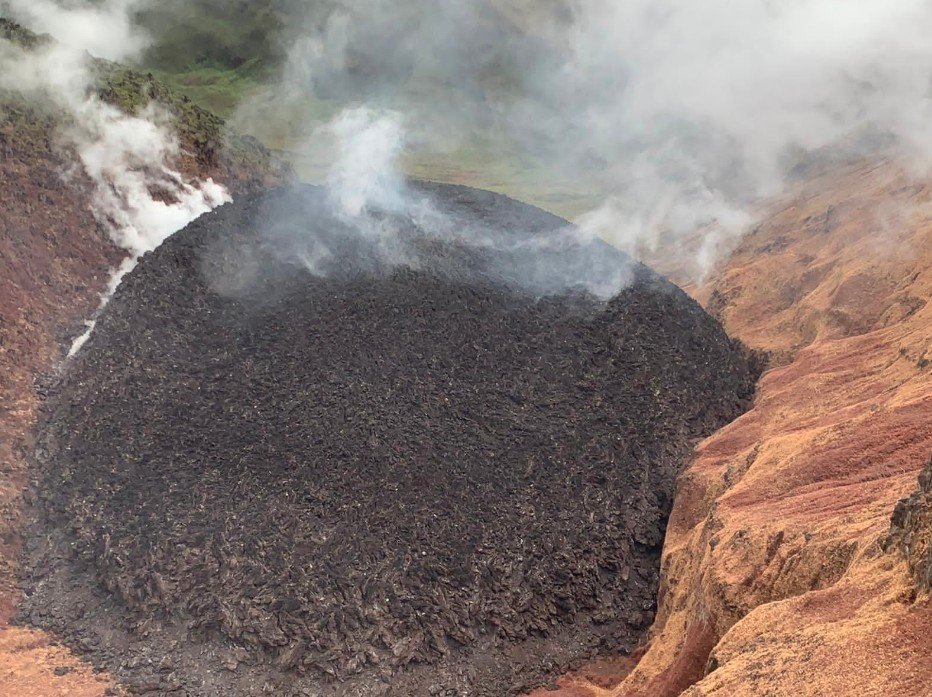
The lava dome at Soufriere volcano on January 14, 2021. Credit: UWI-SRC
The dome continues to grow and is slightly higher and bigger than previously, NEMO said.
It is growing laterally towards the east and west.
Thermal images were taken to determine the distribution of heat on the new dome; however, conditions were not good for an estimate of temperature.
The scientists will need to repeat this exercise as the gases coming out of the volcano were moving around and were therefore difficult to measure.
During the survey of the crater, special cameras took photographs of the dome that will be used to estimate its volume.
Scientists have reported that carbon dioxide is also one of the gases coming out of the volcano, along with sulfur dioxide. Carbon dioxide does not have a smell and can be fatal.
The alert level remains at Orange. The volcano continues to exude magma on the surface and steam can still be observed from the Belmont Observatory.
People living in areas close to the volcano should expect strong sulfur smells for several days to weeks, depending on changes in wind direction.
NEMO is reminding the public that no evacuation order or notice has been issued. The organization continues to appeal to the public to desist from visiting the volcano and especially going into the crater since doing so is extremely dangerous.
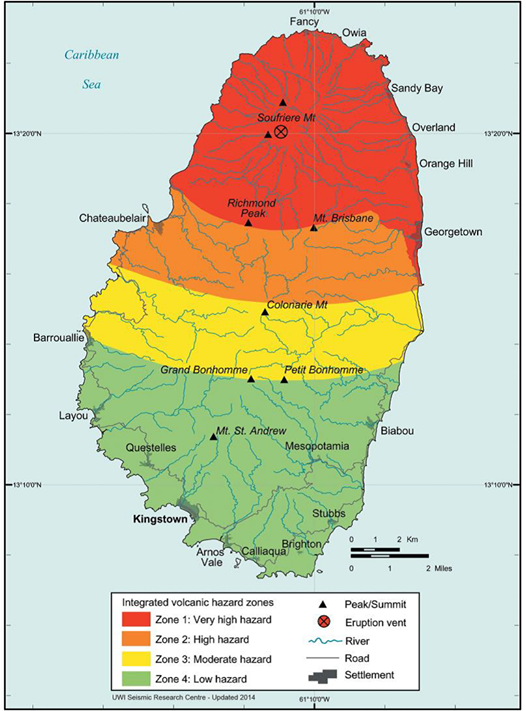
Volcanic Hazard Map – St. Vincent.
The map only shows hazard zone on land. However, lahars and pyroclastic falls, flows and surges will also impact areas offshore to varying degrees, and as such, the hazard zones must be envisaged as extending some distance offshore.
Hazard Zone 1 (Red Zone) – Very High Hazard:
This includes all areas expected to experience maximum damage in the short term and is the zone where all hazardous events have their greatest influence. It is defined by the zone of expected total destruction from pyroclastic flows, surges, and mudflows and by the zone of maximum expected damage from all projectiles. This zone is likely to experience more than 30 cm (12 inches) of ash. During the course of an eruption, this zone would be unsuitable for human habitation.
Hazard Zone 2 (Orange Zone) – High Hazard:
This includes all areas of moderate pyroclastic flow and surge hazard, areas within the 5 km (3.1 miles) projectile zone, and areas likely to experience between 10 and 30 cm (4 – 12 inches) of ashfall. These areas will be affected in a similar manner as Zone 1 during large scale eruptions.
Hazard Zone 3 (Yellow Zone) – Moderate Hazard:
This zone will be free from the effects of flows and surges but will be affected by 5 to 10 cm (2 – 4 inches) thick ashfalls, minor earthquakes and lightning strikes. This zone will experience significantly less physical damage than Zones 1 and 2.
Hazard Zone 4 (Green Zone) – Low Hazard:
This zone includes areas likely to be relatively safe from hazardous events, except for minor ashfall of less than 5 cm (2 inches). Crop damage and disruption of water supply due to ashfall will be the main effect but other physical damage will be minimal.
Geological summary
Soufrière St. Vincent is the northernmost and youngest volcano on St. Vincent Island. The NE rim of the 1.6 km (1 mile) wide summit crater is cut by a crater formed in 1812.
The crater itself lies on the SW margin of a larger 2.2 km (1.3 miles) wide Somma crater, which is breached widely to the SW as a result of slope failure.
Frequent explosive eruptions since about 4 300 years ago produced pyroclastic deposits of the Yellow Tephra Formation, which blanket much of the island.
The first historical eruption took place in 1718; it and the 1812 eruption produced major explosions.
Much of the northern end of the island was devastated by a major eruption in 1902 that coincided with the catastrophic Mount Pelée eruption on Martinique.
A lava dome was emplaced in the summit crater in 1971 during a strictly effusive eruption, forming an island in a lake that filled the crater prior to an eruption in 1979.
The lake was then largely ejected during a series of explosive eruptions, and the dome was replaced with another.
Featured image: The lava dome at Soufriere volcano on January 14, 2021. Credit: UWI-SRC

Commenting rules and guidelines
We value the thoughts and opinions of our readers and welcome healthy discussions on our website. In order to maintain a respectful and positive community, we ask that all commenters follow these rules:
We reserve the right to remove any comments that violate these rules. By commenting on our website, you agree to abide by these guidelines. Thank you for helping to create a positive and welcoming environment for all.